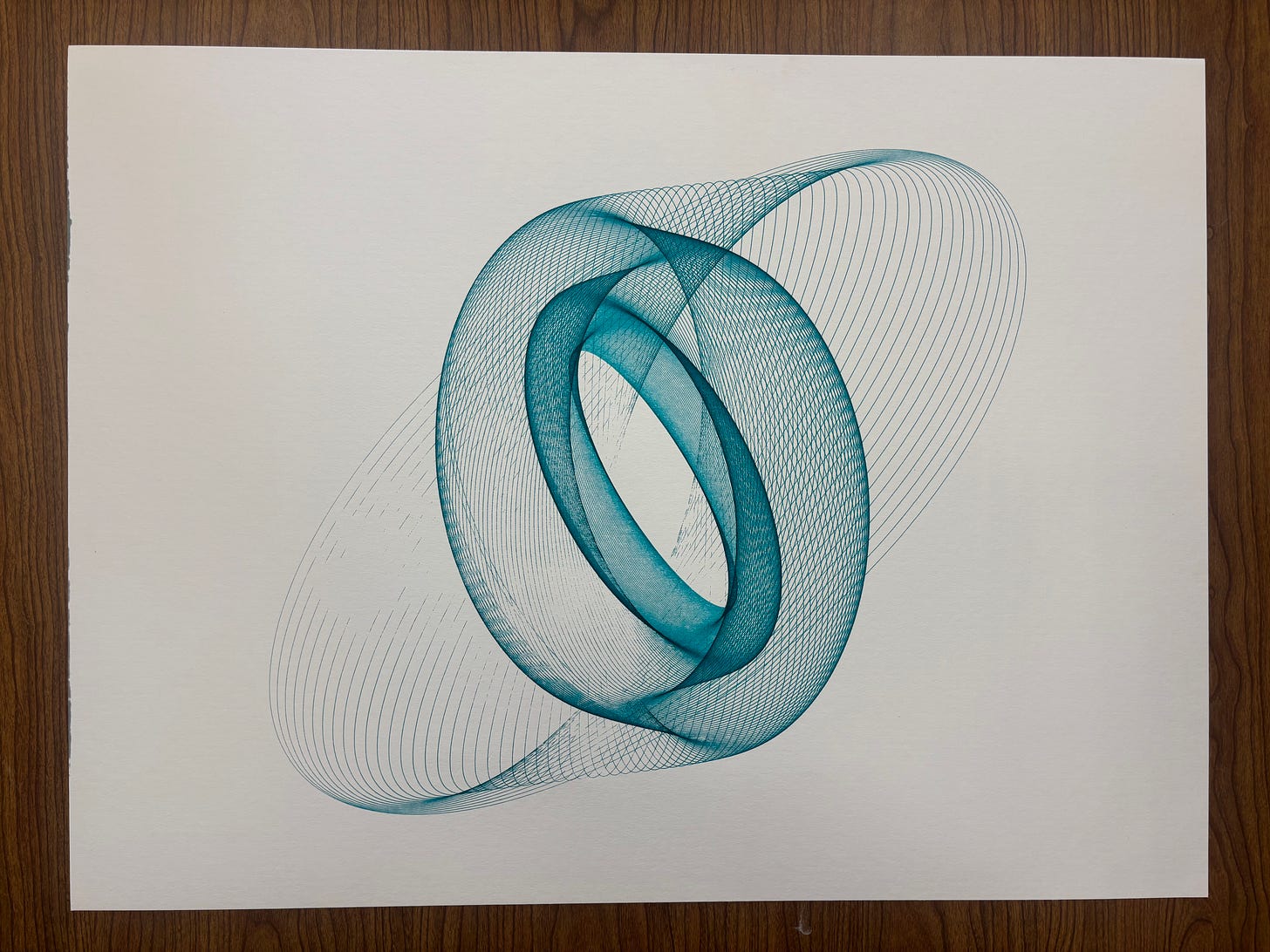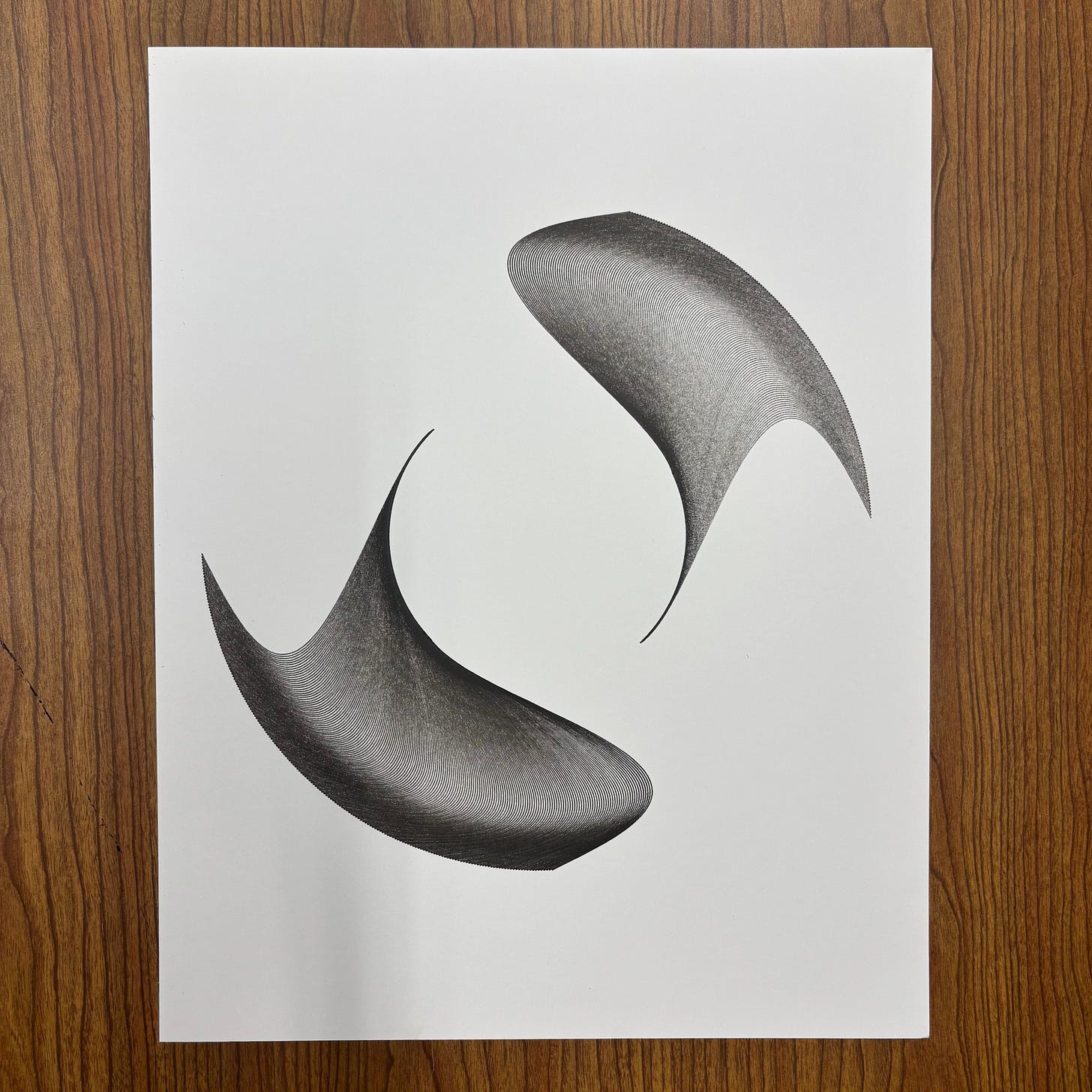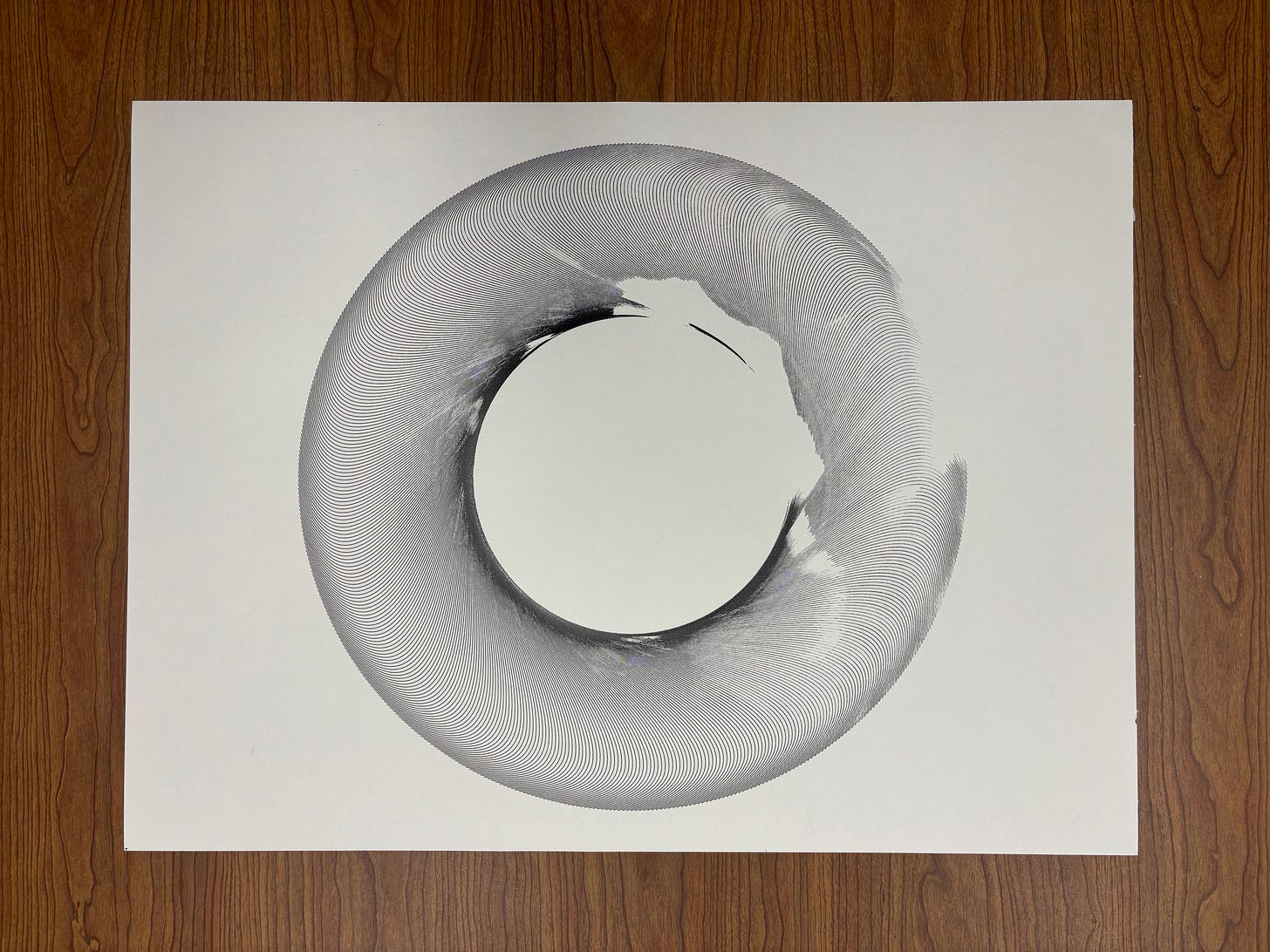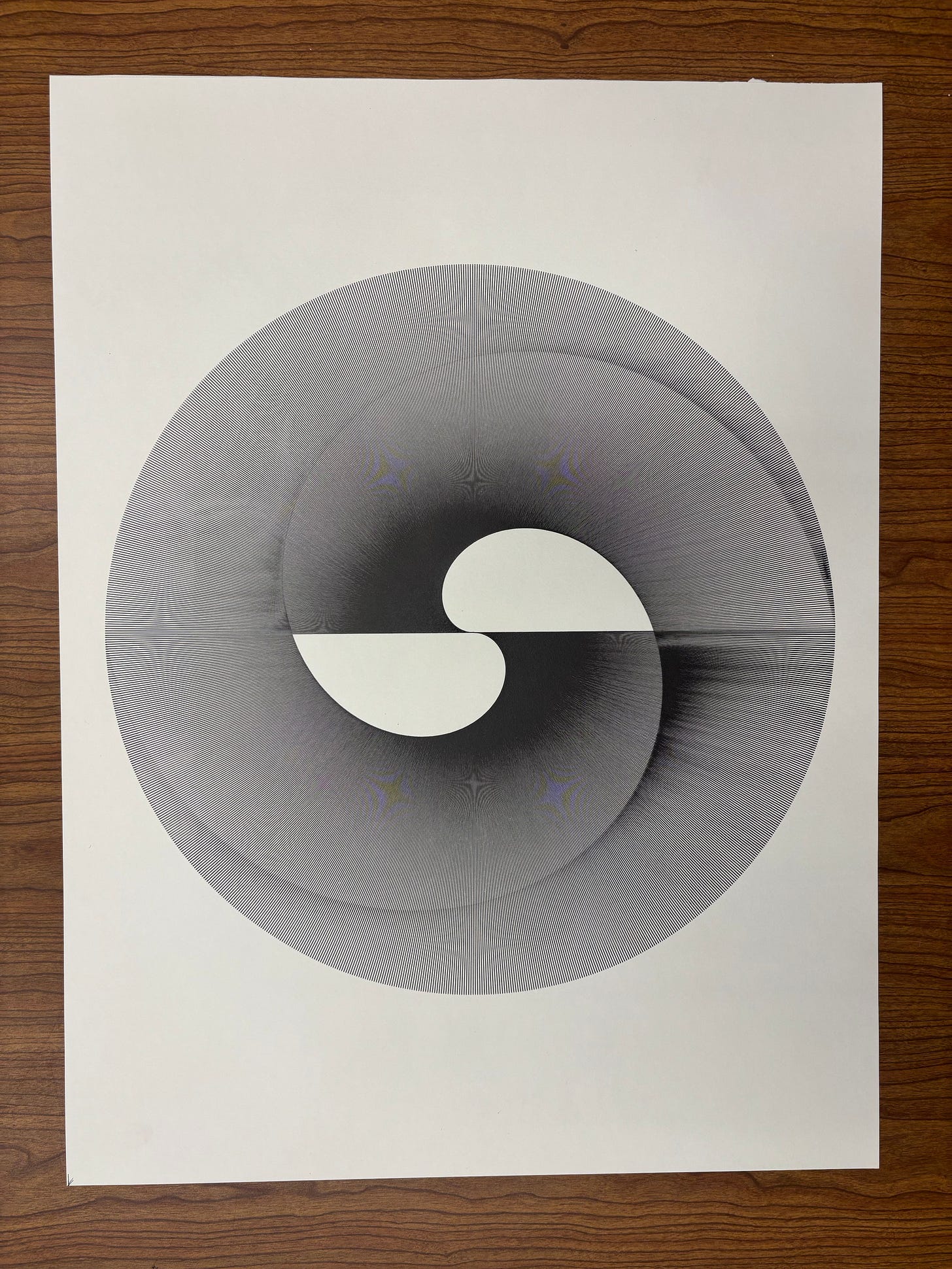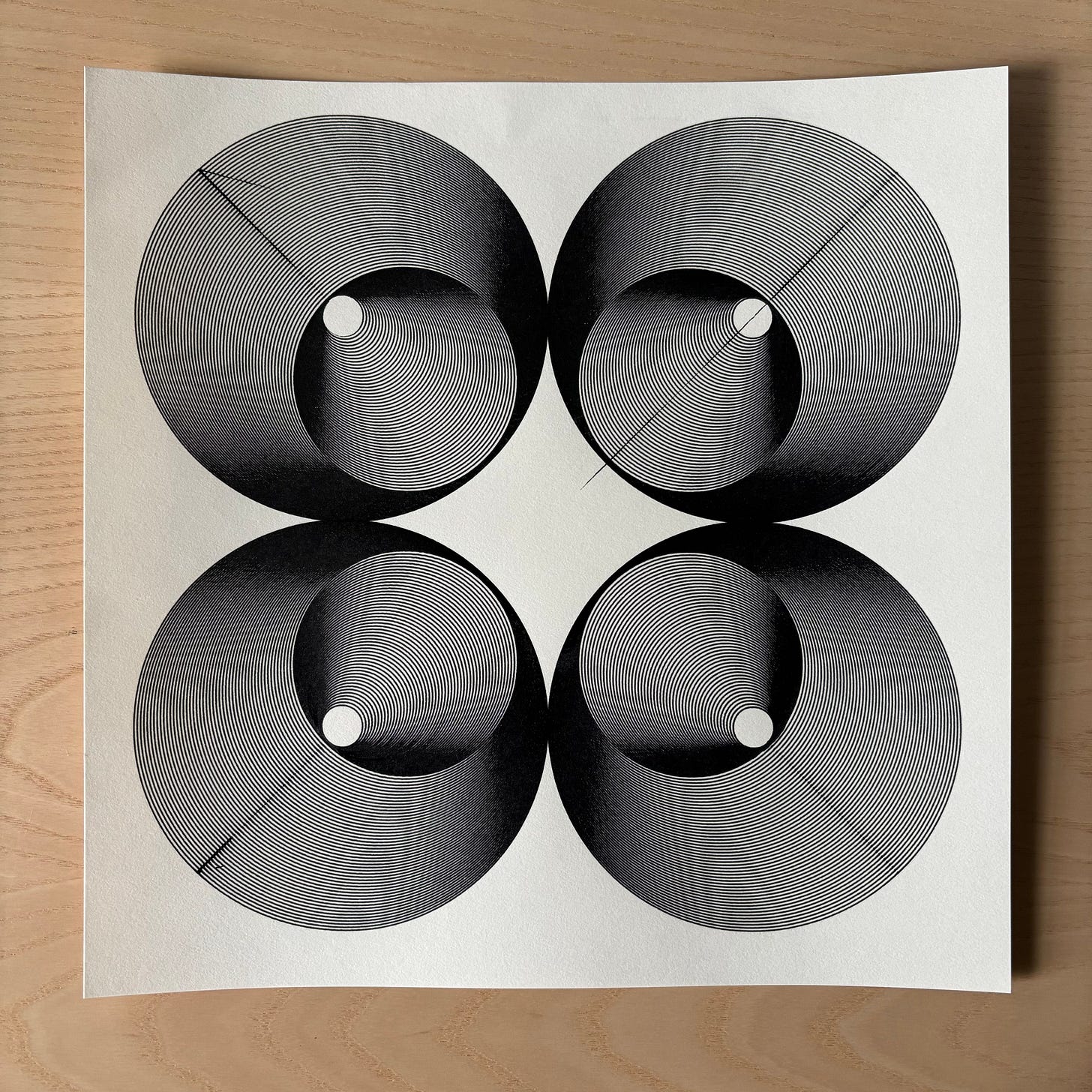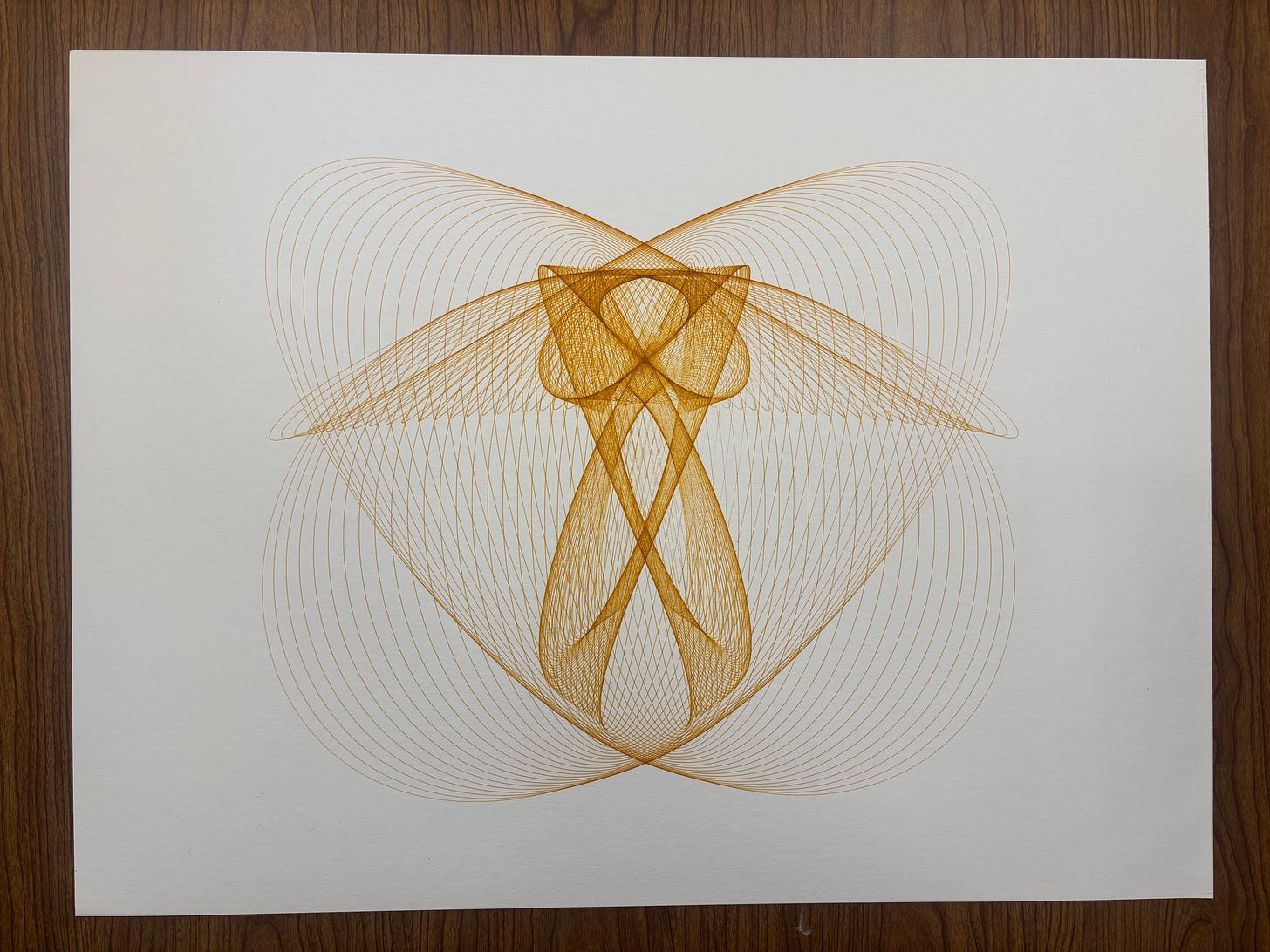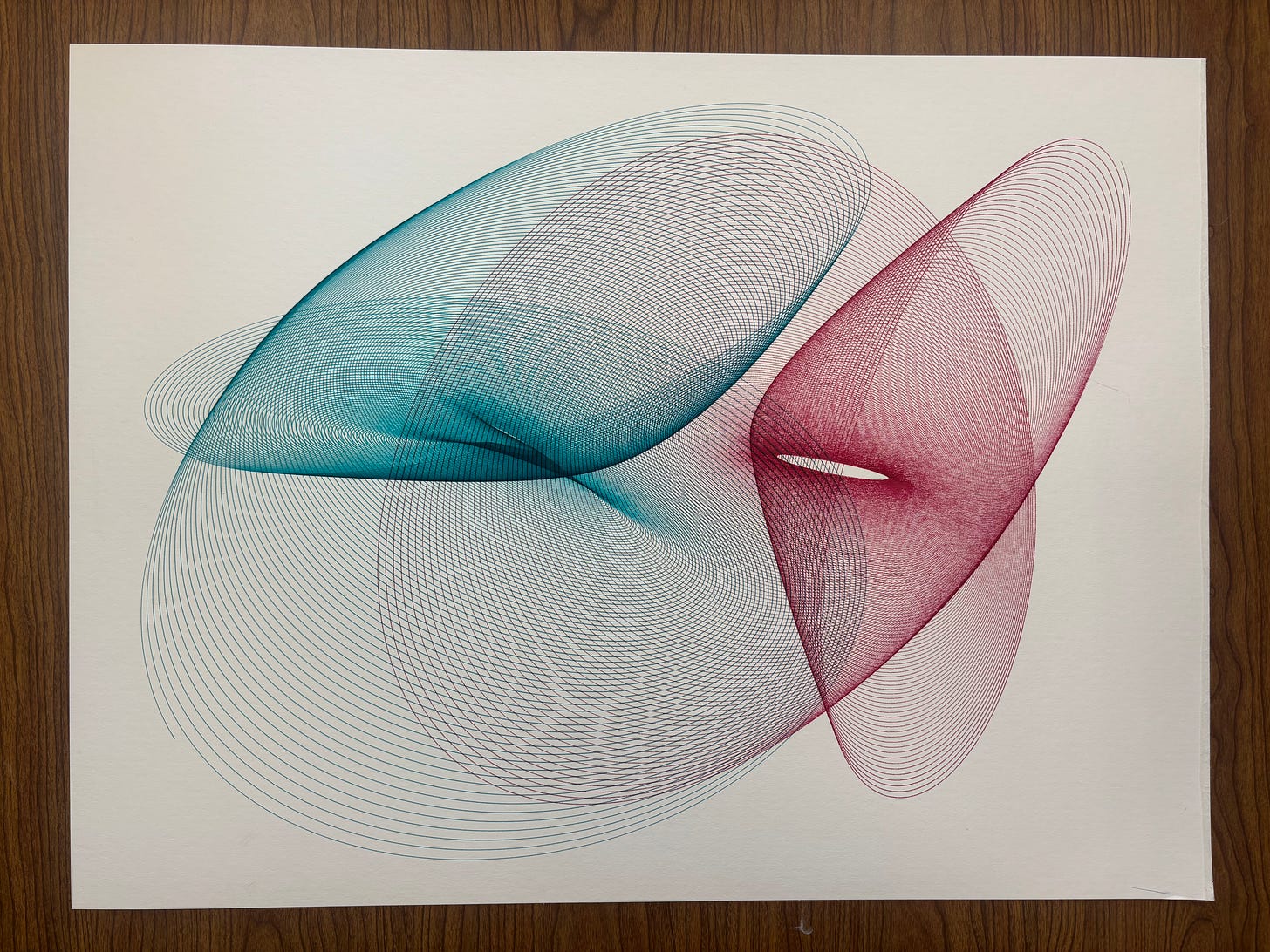These are the answers I’m submitting for the Print Center’s New Voices program. I'm sharing them because I'm proud of them and because of the serendipity that occurs when you talk about your art in public. Many thanks to Yani for helping me craft them.
1. How is printmaking incorporated in your work? Why is printmaking, both as process and concept, a part of your artistic practice?
Printmaking is a conversation between tools, processes and the changes that emerge as these systems interact. Computer coding is central to my artistic framework and I'm drawn to the parallels with printmaking: both require precise step-by-step instructions that can be recreated infinitely. But where digital systems create identical pieces based on perfect grids with clean lines, printmaking must navigate the chaos of physical materials where that precision dissolves into something unpredictable.
When my designs are drawn with a plotting machine, the pen skips across paper and stuttering ink creates gaps in the rendering. When they are printed with a risograph, each layer is applied unevenly and translucent inks combine in ways a screen could never reproduce.
Learning to anticipate and guide these behaviors becomes the craft. I follow the same steps to set up my materials and run my machines, but each work emerges as a unique piece. It's a meditative and responsive process: as I realign, re-ink, and shift each piece along the way. Where code is "code in, code out," printmaking creates space for me to discover the unique quality of each process and material.
The physical ritual matters: repetitive motions, careful preparation, watching marks accumulate slowly. Printmaking insists on its own pace, creating space for reflection that digital tools alone cannot provide. In a world where images can be generated in any style in an instant, this is a process of slowness, chance, and surprise. A process of collaboration between people, tools and materials.
2. Select one work from your application materials and walk us through how it was made, with attention to the materials, processes, research, and conceptual drive involved.
"Tracing Harmony" channels my fascination with the harmonograph; a 19th-century drawing machine that uses pendulums to draw geometric forms that emerge from a single continuous line.
The work begins with a digital simulation of a harmonograph. An algorithm simulates the drawing motion and randomly selects parameters, including duration, pendulums count, and frequencies, to generate thousands of potential variations. These techniques are core to the generative art discipline. My code becomes a single system that can create numerous unique outputs, each an expression of the machine’s combinational choices.
I occupy dual roles as curator and translator. As curator, I select the algorithmic outputs, choosing which qualities to reveal, gradually building a visual language that evolves and grows. As translator, I feed these instructions to a pen plotter for further interpretation. The plotter introduces its own chance operations. In this selected work, continuous curves challenge the plotter's mechanical limits, creating glitch aesthetics. These "errors" generate textural artifacts through material resistance and become integral to the work's identity.
Drawing from Sol LeWitt's instruction-based Wall Drawings, I understand each stage as a space for collaboration. My algorithm provides initial instructions, the computer interprets them digitally, the pen plotter performs final physical interpretation. Like LeWitt's pieces executed by different hands, each layer adds its voice. This translation from physical machine to digital simulation back to physical machine sits at the crux of my practice. The accumulation of variation is a record of that collaboration. The series is a never-ending visual conversation between pieces.
3. How does your work engage with the curator's guiding theme?
My work emerges from my background as a software engineer, where I learned that every system reflects the assumptions of its creators. Most systems are designed to create consensus, to smooth out variation and reward conformity. But what if we created systems that uplift many viewpoints and allow them to thrive simultaneously? What we call "edge cases" are viewpoints that the system was not designed with in mind.
When I approach design, I'm not designing traditional systems that optimize for control and consistency. Instead I strive for pluralistic systems that remain in flux and incorporate different viewpoints as they unfold. I design visual systems where variability between the parameters: the frequency ranges, color palettes, line weights; harmonize. I design processes that amplify the bits that get lost in translation as the digital becomes physical and vice-versa. Rather than smoothing over these moments of material resistance, I find the unique grain of each machine or material and lean into it, allowing each collaborator's voice to remain distinctive.
Each piece teaches viewers to see the relationship between individual elements and collective patterns. Simple shapes morph into complex designs through variation. By making visible the usually hidden processes of system creation—the code, the machine movements, the material encounters—I'm designing for transparency and access, showing others how to see themselves as both products of systems and potential system-makers in their own right.
Fingers crossed 🤞🏿
-Mello
P.S. - Here are some of the other pieces that are part of my submission


